Microsoft Edge is the default web browser for Windows 11, but sometimes, users might face issues like bugs, crashes, or want to restore the browser to its original settings. Resetting Microsoft Edge can help resolve these problems by returning the browser to its default state. This guide outlines several methods to reset Microsoft Edge on your Windows 11 PC.
Using Windows settings to reset Edge
You can reset Microsoft Edge through the Windows Settings app. Here's how:
- Open the Settings app by pressing
Windows+ion your keyboard, or by typing "Settings" into the Start menu search and selecting it.

- In the Settings window, click on "Apps" in the left sidebar, then select "Apps & features" on the right.
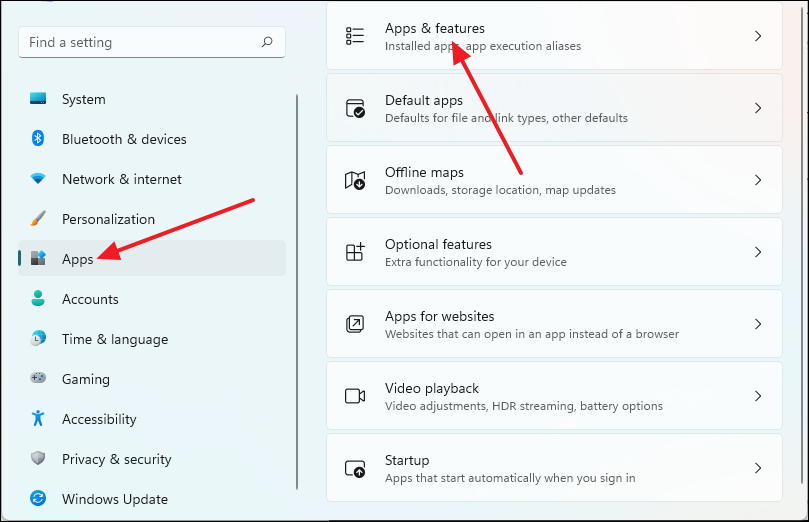
- Scroll through the list of installed apps to find "Microsoft Edge". Click the three vertical dots next to it, then choose "Modify".
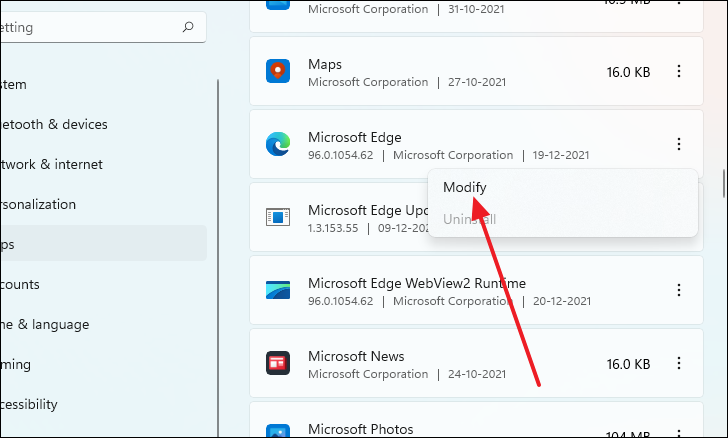
- A window titled "Repair Microsoft Edge" will appear. Click on "Repair" to proceed.
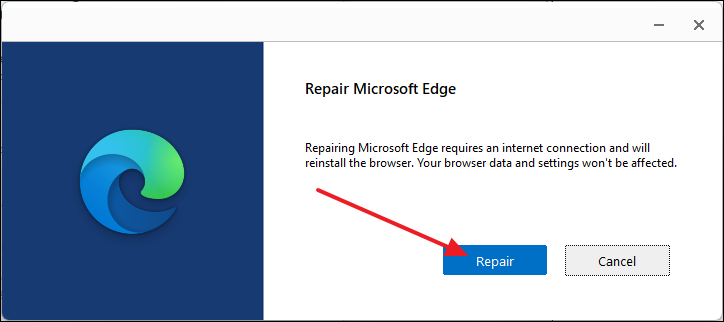
Windows will now remove Microsoft Edge from your system and reinstall it. This process helps fix any issues with the browser.
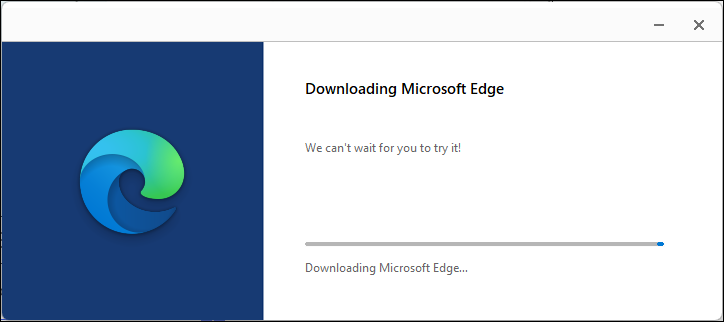
Note: Ensure you have an active internet connection during this process, as Windows needs to download the Edge browser. Additionally, this method does not reset your personal settings or data in Microsoft Edge. If you want to reset the browser settings and clear your data, proceed with the next method.
Reset Microsoft Edge from Edge settings menu
You can reset Microsoft Edge directly from within the browser. Follow these steps:
- Launch Microsoft Edge by searching for it in the Start menu and selecting it from the results.
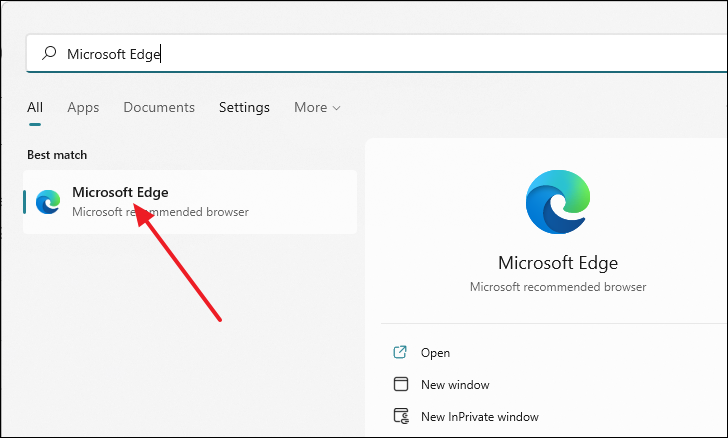
- Once Edge is open, click on the three horizontal dots (
...) next to your profile picture.
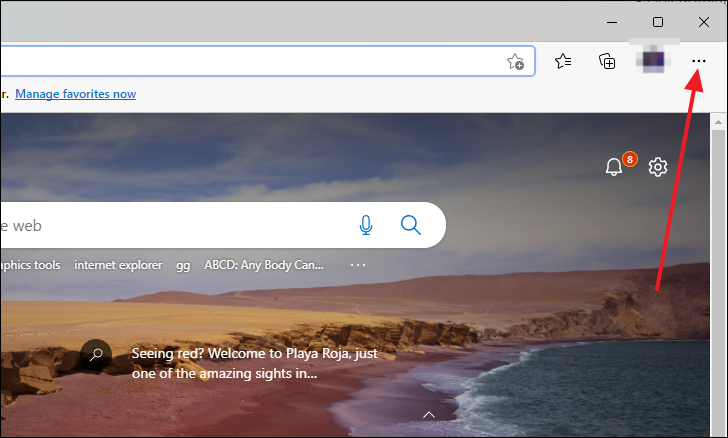
- From the dropdown menu, select "Settings".

- In the Settings sidebar, click on "Reset settings".
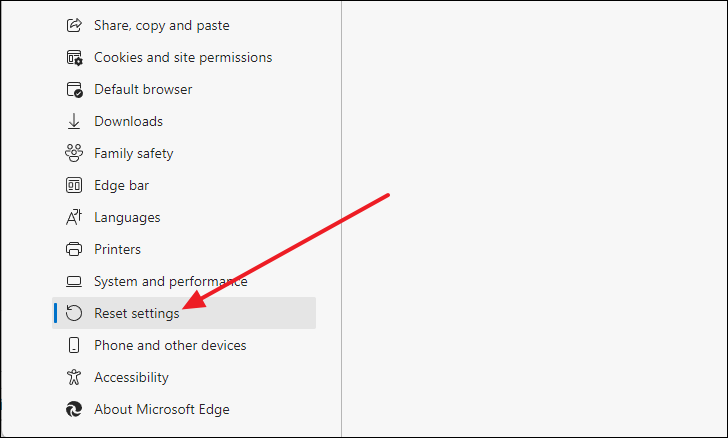
- On the right, click on "Restore settings to their default values".

- A confirmation dialog will appear. Click on "Reset" to confirm.
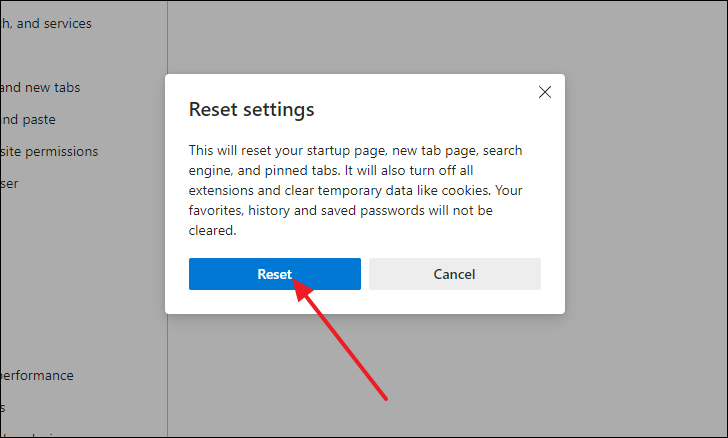
- After resetting, a notification will appear stating "Settings were reset".
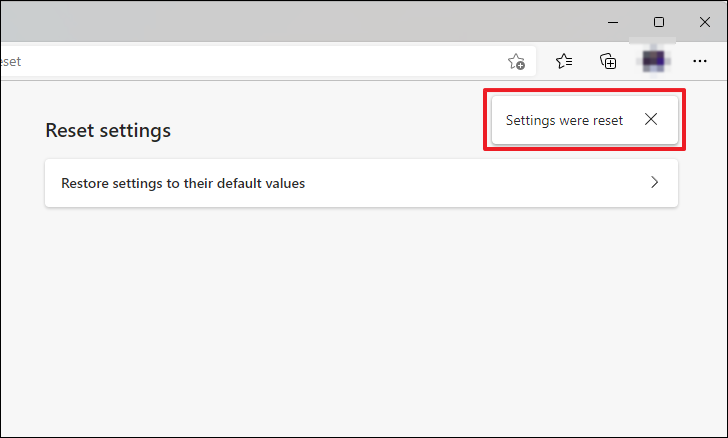
This process resets your startup page, new tab page, search engine, and pinned tabs. It also disables all extensions and clears temporary data like cookies. Your favorites, history, and saved passwords will not be cleared.
Reset Microsoft Edge with PowerShell
Another way to reset Microsoft Edge is by using PowerShell, which allows you to execute commands to reinstall Edge. Follow these steps carefully:
- Press
Windows+Rto open the Run dialog. Typeappdataand pressEnter.
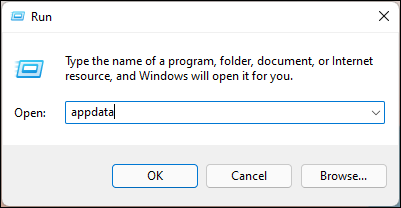
- In the File Explorer window that opens, double-click on the "Local" folder.
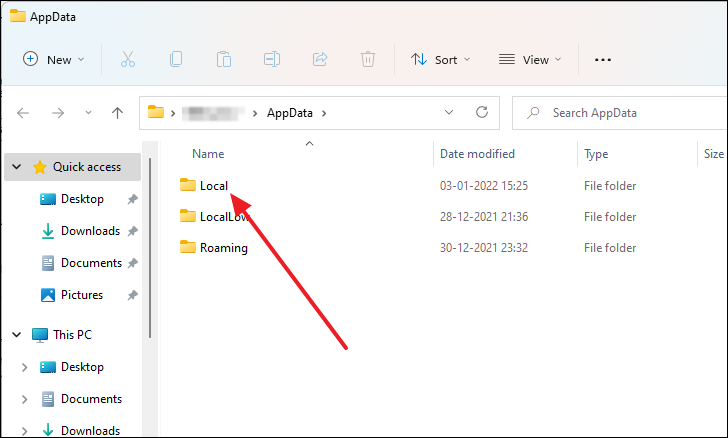
- Open the "Packages" folder.

Scroll down to find the folders named:
Microsoft.MicrosoftEdge.Stable_8wekyb3d8bbwe
Microsoft.MicrosoftEdge_8wekyb3d8bbwe
- Open one of these folders, press
Ctrl+Ato select all files, and delete them by pressing theDeletekey or right-clicking and selecting the delete option.
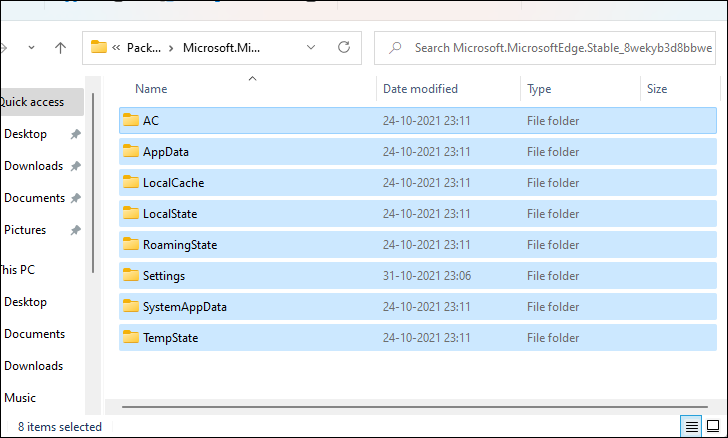
- Repeat the deletion process for the second folder.

- Open PowerShell with administrative privileges. Search for "PowerShell" in the Start menu, right-click on it, and select "Run as administrator".
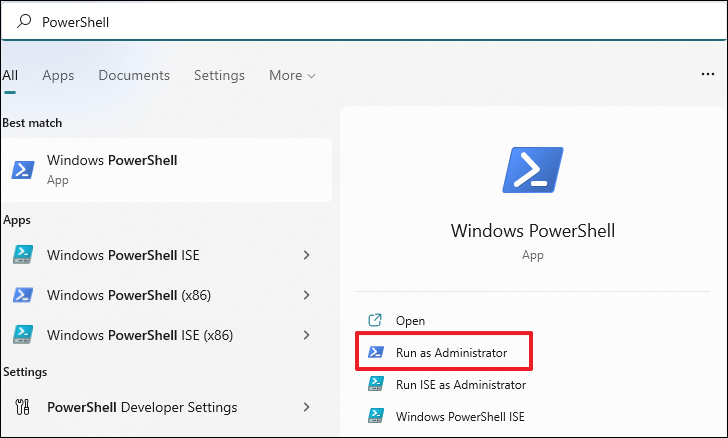
In the PowerShell window, copy and paste the following command, then press Enter:
Get-AppXPackage -AllUsers -Name Microsoft.MicrosoftEdge | Foreach {Add-AppxPackage -DisableDevelopmentMode -Register “$($_.InstallLocation)\AppXManifest.xml” -Verbose}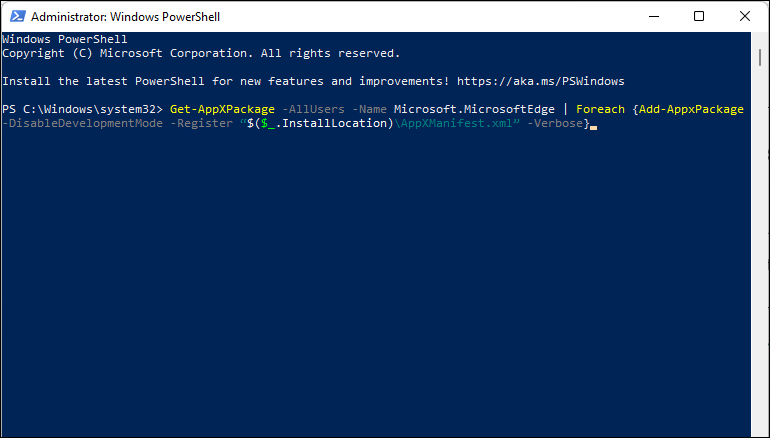
- Wait for the command to complete. You should see a message indicating the operation was completed.
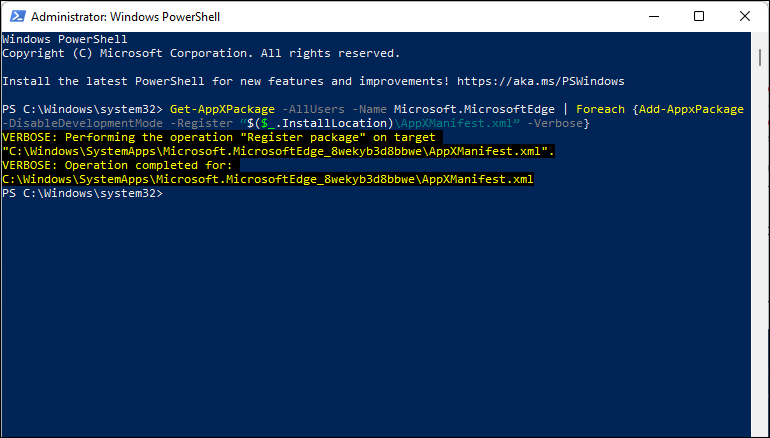
- Restart your computer to apply the changes.
Note: Be cautious when using PowerShell commands, and ensure you follow each step carefully. This method reinstalls Microsoft Edge and resets it to its default state.
Resetting Microsoft Edge can help resolve many common issues and restore the browser to its default settings. Depending on your situation, choose the method that best suits your needs to get Edge running smoothly again.

